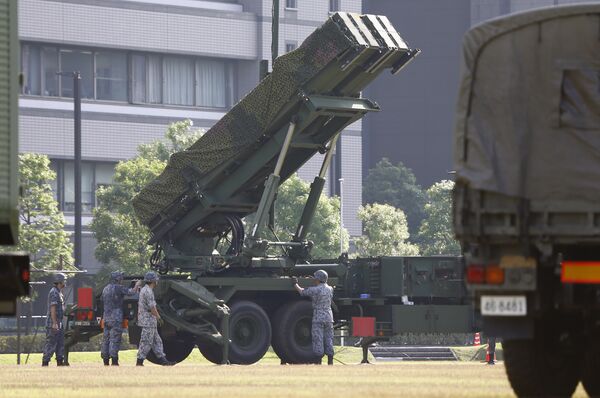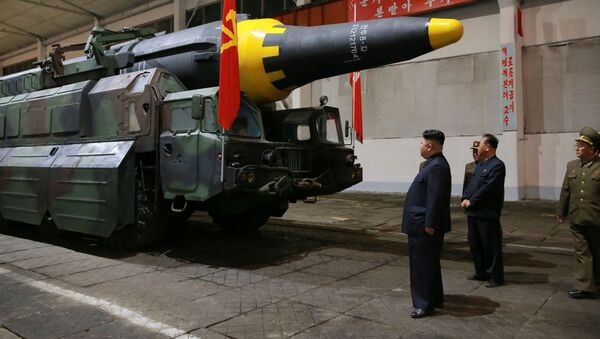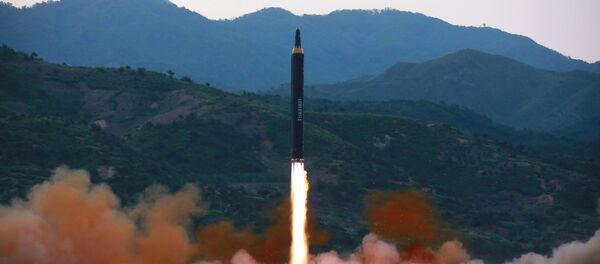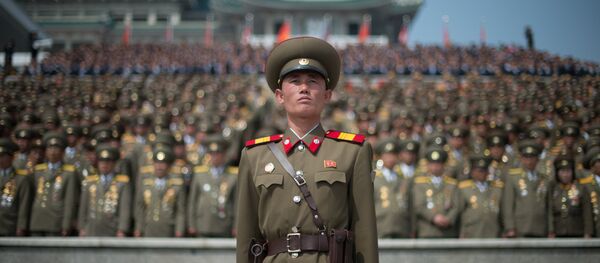Last week, North Korea test launched its new Hwasong-12 intermediate range ballistic missile. The missile flew over Japan before falling into the Pacific Ocean, some 733 miles (1,180 km) east of Japan's northern island of Hokkaido.
Commenting on the missile test, and Japan's response, RIA Novosti military observer Alexander Khrolenko wrote that Pyongyang's latest test has demonstrated beyond a shadow of a doubt that all the sophisticated US missile defense systems in and around the Asian country are next to useless.
"Today," the analyst explained, "Japan's missile defense is provided by ships equipped with the American Aegis system (which features the SM-3 missile for exoatmospheric interception). In addition, Japan has ground-based Patriot-3 (PAC-3) systems for the destruction of missiles within the atmosphere."

"However, all these means proved useless on August 29, when the North Korean ballistic missile flew over Japanese territory and fell 1,180 km from Cape Erimo in Hokkaido. In 14 minutes, the missile flew a total of 2,700 km, reaching a maximum altitude of 500 km."
Although Japan reported no damage to any ships or aircraft from the test, Khrolenko noted that it was highly curious that they didn't even attempt to shoot the rogue missile down. "They could have at least attempted to shoot it down, if only for training purposes," the analyst wrote. "The world community would not condemn such a move, and Washington would have certainly supported Tokyo. However, US and Japanese missile defense systems only ended up tracking Hwaseong-12's trajectory."
"What's even more interesting, of course, is how Japan may have intended to shoot down the North Korean missile flying at an altitude of 550 km, when the longest-range US SM-3 guided missile has a 250 km flight ceiling. With a target lock radius of 500 km, the Aegis system would not have been able to reach the missile even during its descent, either. All the more so, given that the target separated into three parts (possibly three warheads)."

With these facts in mind, Khrolenko suggested that the "record request by the Japanese Defense Ministry [actually] reflects the degree of panic within the camp of US allies; after all, this wasn't the first time that a reason to doubt the omnipotence of US weapons, and specifically its ABM systems, presented itself."
It was interesting, however, according to Khrolenko, that the Pentagon "did not specify whether the North Korean missiles would be intercepted. And this is fundamentally important when it comes to predicting losses and the outcome of a war (which would not leave Japan unaffected, either)."
Moreover, according to the analyst, the North Korean missile launch proved particularly humiliating in light of the fact that the same day the launch took place, Japanese troops were conducting air defense drills at the Yokota Air Base in western Tokyo, where they practiced the deployment of Patriot-3 interceptors.
"From a military perspective, the exercises coincided successfully with the test of North Korea's new ballistic missile. Pyongyang 'played ball', but Washington did not accept the unexpected 'pitch'. Servicemen looked on anxiously into the skies, and continued to practice the speedy deployment and setup of the PAC-3's components, as if the motions were more important than the actual result."
Factually, Khrolenko wrote, the true effectiveness of the US's numerous and costly missile defense systems has yet to be proven in conditions resembling those on a battlefield.
"Only once, in February 2013, did an SM-3 interceptor, launched from the USS Lake Erie missile cruiser, destroy USA-193, a defective US satellite at an altitude of 247 km. The target simulated a medium-range ballistic missile (even though the latter do not fly along an orbit). The test was simplified as much as possible, the parameters of the flight were known in advance, as was the target sector. External target designation was provided from the STSS-D tracking satellite, which may not be handy in a real combat situation."
In effect, Khrolenko noted that North Korea's latest missile test has "created a paradoxical parity of forces in that country's confrontation with the United States." In these circumstances, he noted, Washington would be advised to avoid subjecting its regional allies to danger.






